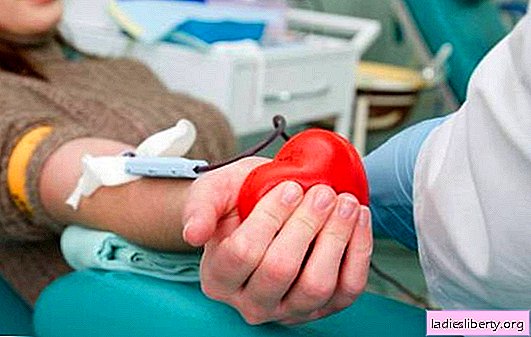
Another month completely unnoticed rushed through, there was not even time to look around. It's amazing how much the baby's appetite has increased by this time, isn't it?
Moms with breastfeeding even sometimes begin to worry that there is not enough milk. But do not worry, everything is explained very simply: the development of a child of 4 months coincides with a period of increased growth. A few days will pass with slightly more frequent feedings and lactation will again meet the needs. And for artificial babies, after consulting with a pediatrician, you should increase the portions or frequency of feedings.
What new things appeared in the life of the crumbs during this time, what did he learn, what was he capable of?
What should a child be able to do at 4 months
The peanut is now learning to imitate speech: the sounds that it plays are becoming more rhythmic. How funny all these repeating "meme-meme" and "he-he-he-ge" sound! Have you noticed how it calms down at the sound of music and listens sensitively? By the way, the baby already remembers the voices and begins to get ridiculously active (waving arms and legs in the air), she barely hears her favorite ones - mother's or father's.
New emotions have been added to the ability to express joy: the child already expresses surprise at the sight of something unknown, is frightened at the sharp and loud sounds, is alarmed at the sight of strangers.
Sitting in the arms of an adult and hearing a noise or someone's voice, the child quickly turns back to where it comes from. At this age, you can no longer risk it, leaving him out of the crib or playpen alone without supervision, because he is more and more actively deploying and even learning to roll over. So, there is a risk of falling from a high surface without sides.
The baby is more confidently grabbing the rattles that come into view, although it often still misses. Books that fall under the tenacious fingers are especially affected by this, so take these objects away from the thirsty for new toys and the impressions of a peanut. Yes, he is absolutely charmingly animated at the sight of unusual bright rattles, tumblers. A variety of rings are especially good for crumbs: they are so convenient to grab and pull into your mouth!
The kid is still bewitched by the human face, he watches with great attention the facial expressions, violently rejoicing at the smile and the next mom's comic make-up. The baby likes to comfortably sit in the arms of her parents, while he already confidently holds the head straight.
Observe a healthy and happy baby when it is lying in a crib or on a flat surface. There is a specificity in the behavior of the peanut, on the basis of which it can be judged that development is proceeding normally.
Once on the tummy, the baby will immediately begin to rise on his forearms, freely turning his head to the sides, as soon as something attracts his attention. The pelvis and thighs wide apart should lie tightly on the diaper or blanket, as well as the entire stomach. He can move his feet, lifting them.
Put the little one in a good mood on the back, he will begin to raise the arms and legs up. Noticing the palms in front of him, he will begin to examine and pull in his mouth. The same thing will happen with the feet: they will hardly be in sight when he grabs them with his hands and tastes them by smacking his fingers. Check while the child is playing, so that the back of the head, buttocks and back rest firmly on the support.
As for any age stage, there are normative indicators of what a child must be able to do at 4 months. If any deviations are observed, it is important to consult a pediatrician in a timely manner. The famous American pediatrician Benjamin Spock recommended to consult a doctor if a four-month-old baby is:
- not able to raise the body, trying to lean on the forearms;
- involuntarily tilts his head back when he is lifted by the palms from a supine position;
- Does not even try to lean on the tips of the toes when he is held under the armpits in an upright position;
- Does not smile at the conversation of relatives;
- not happy with the games.
Physical development of the child at 4 months
Over the past month, the baby added 450 g in weight and 2.5 cm in length. Do not be alarmed if the increase in performance goes a little slower: this is the norm.
According to the standard indicators of the basic physical parameters of children under one year of age and older, developed by WHO (World Health Organization), at this age your baby meets the following criteria:
- the growth of girls is in the range of 59.9-64.3 cm, and boys - 61.8-66.0 cm;
- the mass of little princesses varies from 5.7 to 7.3, and their peers - from 60.2 to 7.8 kg;
- the head circumference of tiny clever women is 39.3-41.8 cm, and that of clever men is 40.4-42.8 cm.
If a child does not fall within the range of average values in terms of his indicators, then do not rush to be upset: each child is unique and develops at his own, convenient pace. Nevertheless, be sure to consult your pediatrician to know how you can help your baby.
Baby Charge
Exercise strengthens the cardiovascular system of the crumbs, stimulate blood circulation and respiration, form motor skills.
1. From the supine position, the right and left legs are first bent alternately. Then the same is done by both at the same time. The knees are divorced, the bent legs should touch the tummy, then straighten. The number of movements - 3-4 times.
2. In the same position, place your thumbs in your hands - the cams will compress reflexively. Gently push the handles apart, pull them forward and lower them in a circle. Movements are performed 5-6 times.
3. The kid holds your thumbs. Carefully move the handles apart, cross them on the chest. Alternately change the position of the hands when crossing (top left or right). The tempo is rhythmic, fast alternating with slow, repetition - 6-7 times.
Exercises for baby development at 4 months
Everything that a child should be able to do at 4 months of age is mastered by him gradually, nature-friendly. But the parents are able to help the little one. You just need to pay as much attention as possible to development, because it is very simple and requires only your desire and patience.
1. Talk with the baby all the time during wakefulness and be sure to provoke his reaction: let him walk you in response.
2. Replace one toy around it alternately with another, expand its space, comment on all your actions - this stimulates the cognitive interests of the baby.
3. The child needs to learn to capture objects on the first attempt, so offer him toys with a long handle, pendants, rings with bells. The kid already distinguishes colors, therefore, objects should differ on this basis.
4. Take the time and create unique nursery rhymes: take a fabric of different textures, sew multi-colored bags. Put noise fillers inside: a kinder surprise box with peas or beads, rustling paper, a bell. The sound will attract attention, and various sensations when feeling develop the tactile sensitivity of the child.
5. At the elongated handle of the hob, hang different toys over the chest. Waving his little hands, he will surely stumble upon them and enthusiastically begin to engage in a fascinating, useful business: he will examine them, feel, grab, pull towards him.
6. Arrange regular “roll calls” with the baby. Free up time so that you are only together and nothing will distract the baby. Show him the toy and talk about it. At the same time, pull the vowels, speak louder, then quieter, repeat the phrases several times. This makes the baby focus on the sounds of your speech. Pause so that he can insert his babble when the mother’s voice calms down: he wants to hear it again.
Make the little "interlocutor" follow your mouth and make sounds, deliberately exaggerating, articulating with your lips. At this time, he may even begin to imitate their movements.
7. Lay the child more often on the tummy, gradually increasing the time spent in this position: this is how crawling skills are formed. Show your kid bright toys, let him reach for them. Stretch them on the side - then it will gradually get better and better to turn over. But do not try to put the baby, or put it down - at the age of four months, there will be no benefit from this, only harm to the fragile bone system.
Now in children's stores they offer many interactive programs (computer, television), cartoons, audio recordings for all ages. The temptation is great to turn them on and leave the little one to follow the bright flickering images, waiting for the promised jump in development.
But you and I understand that living with your mother and loved ones will not be replaced by any achievement of science or technology. Only through emotional communication can a full development of the child occur in 4 months. Talk better during each interaction, sing songs, tell nursery rhymes - the benefits will be more than a hundred times. And for all sorts of technical innovations and media resources, the time will come when they will be needed. There are many discoveries ahead that the kid will have to make with the help of mom and dad.











